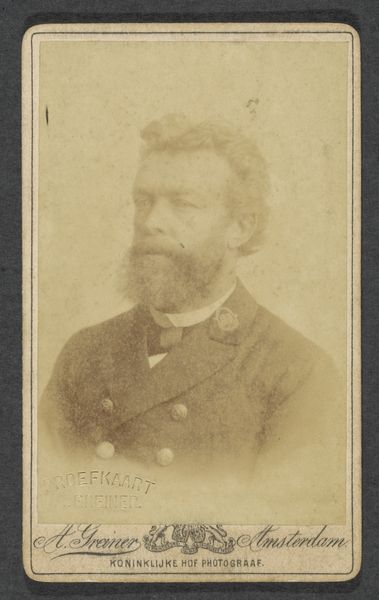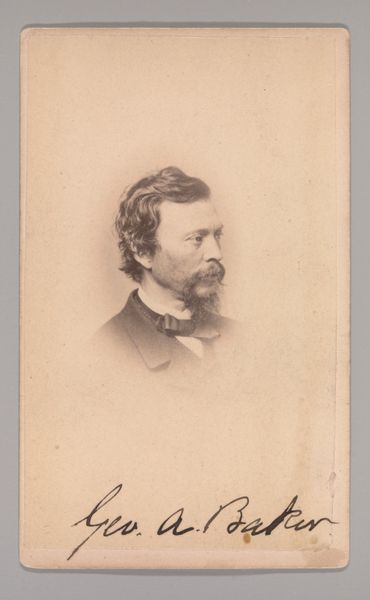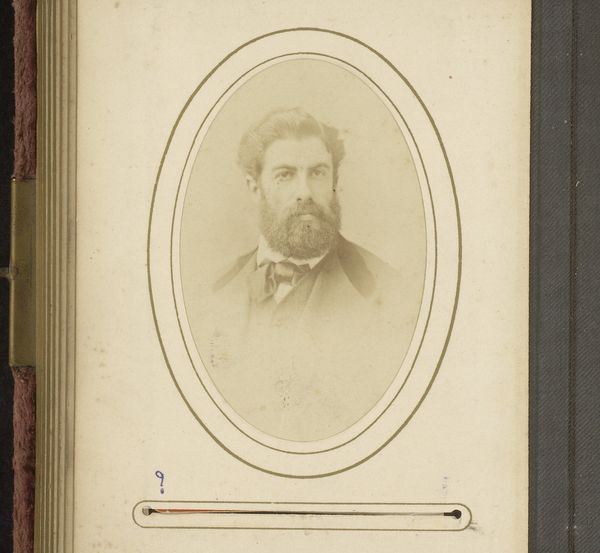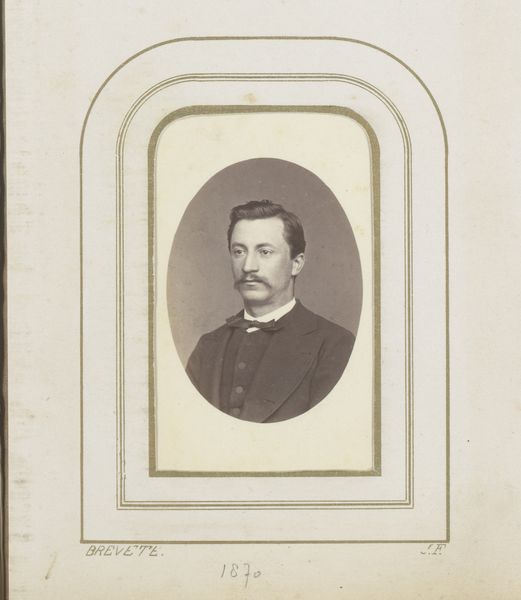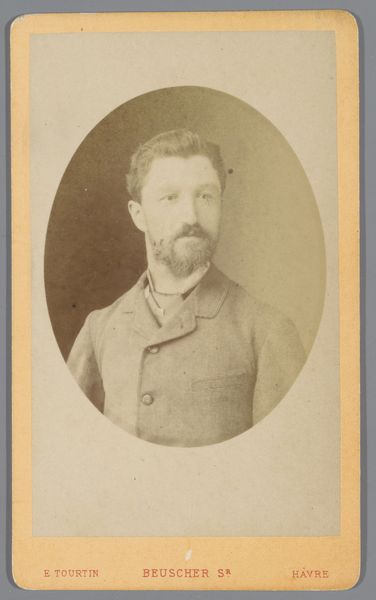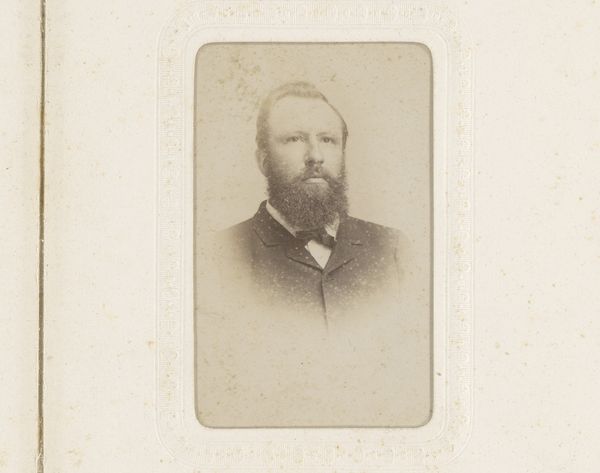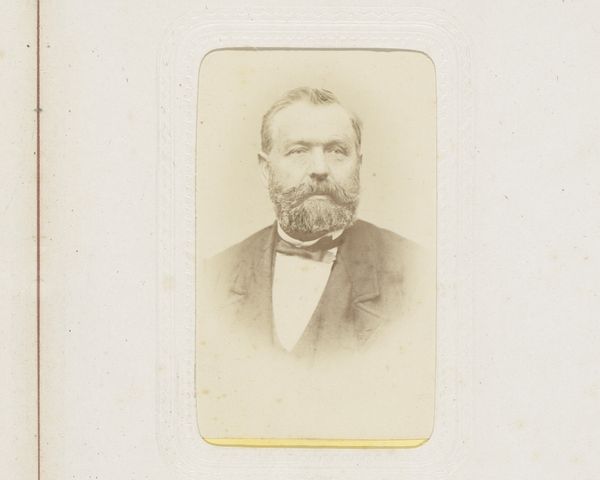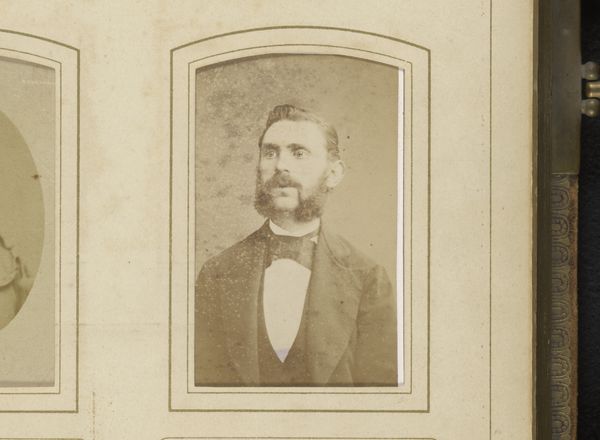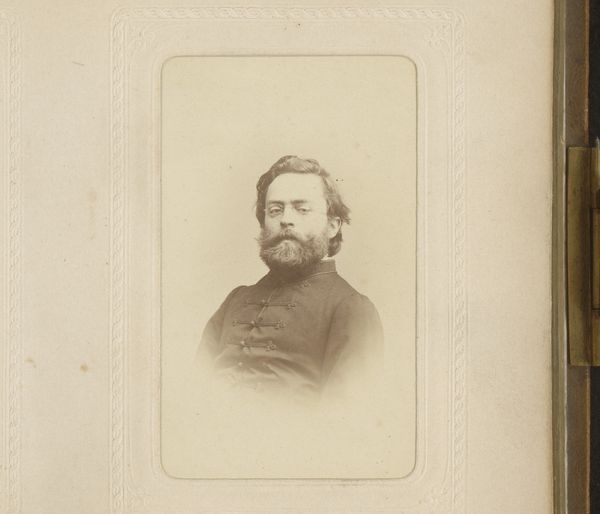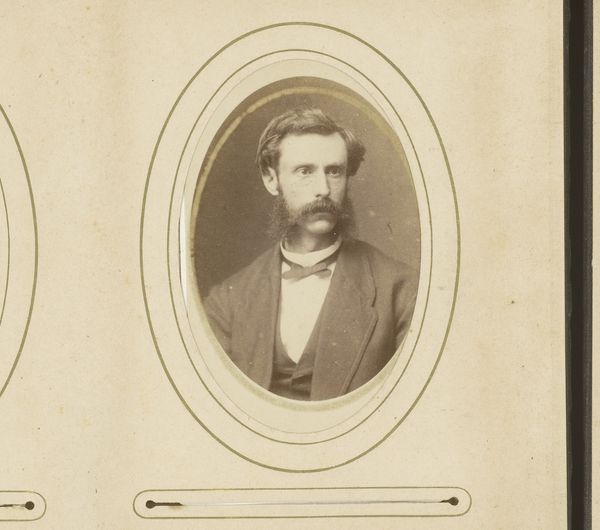
photography, gelatin-silver-print
#
portrait
#
photography
#
gelatin-silver-print
#
realism
Dimensions: height 83 mm, width 50 mm
Copyright: Rijks Museum: Open Domain
Curator: Looking at this compelling portrait, its almost somber mood immediately strikes me. There’s a palpable stillness, wouldn't you agree? Editor: I would. Let's delve into some background. We're examining a gelatin-silver print dating roughly from 1860 to 1882, entitled "Portret van een man met baard in uniform"—"Portrait of a Man with Beard in Uniform"—attributed to Charles De Trez. Curator: The anonymous man in uniform holds so much history within the limits of his gaze. The very act of a man from this era being photographed suggests a certain socio-economic privilege. He is more than likely white, and his dress clearly signals affiliation with a military structure of power, possibly tied to colonial activities of the time. Editor: That’s an important point to consider. It's intriguing how photographic portraits became increasingly accessible, capturing individuals from diverse backgrounds, but initially, were dominated by representations of power and status. And how these institutions played a crucial role in shaping art production, deciding whose story was told. Curator: The photographic medium itself presents an interesting dichotomy, does it not? On one hand, a claim to realism or objective representation. On the other, the undeniable intervention of the photographer's vision, their biases influencing framing, lighting, even the subject’s posture. What do we read from his expression here? Is it defiance, resignation, perhaps a calculated stoicism for the camera? Editor: Or, dare I say, the discomfort that comes with being in front of early photographic processes? We might over-interpret the "stern" look. But considering photography’s role as a means to construct identity in the public sphere at this time, it's very fair to interrogate the nuances of his expression within a politicized reading. Curator: Exactly. This image becomes a fascinating artifact when read intersectionally, layering gender studies, racial identity and military hierarchies upon it. Even something seemingly simple, like the beard, what symbolisms did this specific type of facial hair carry in 19th century Europe? Editor: It’s a powerful reminder that even the most straightforward image carries multiple layers of interpretation, revealing so much about the period it comes from, and our current engagement with its politics of representation. Curator: Absolutely. It truly encourages you to consider photography's historical development within a social and cultural scope.
Comments
No comments
Be the first to comment and join the conversation on the ultimate creative platform.
